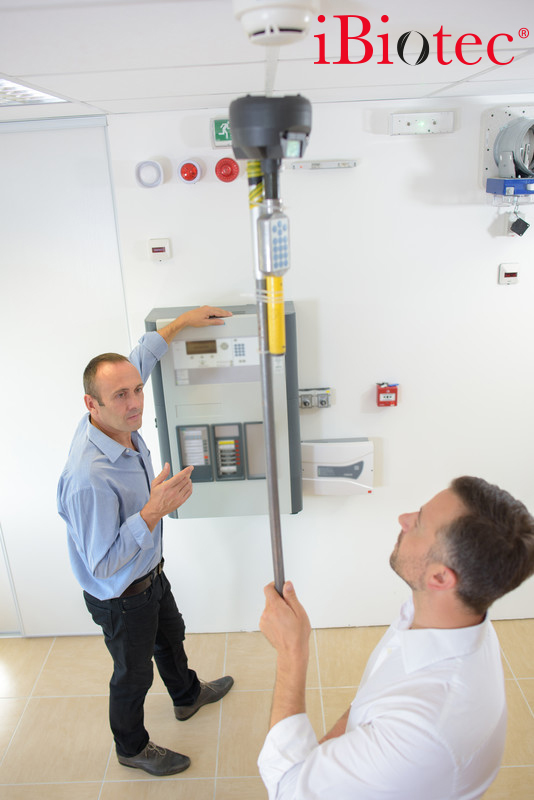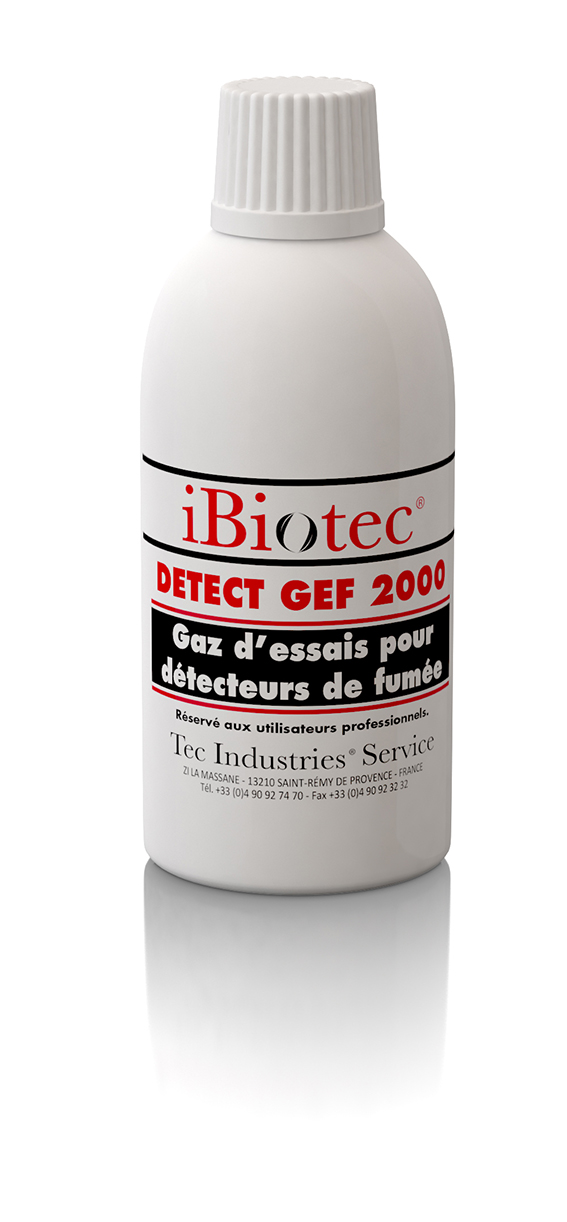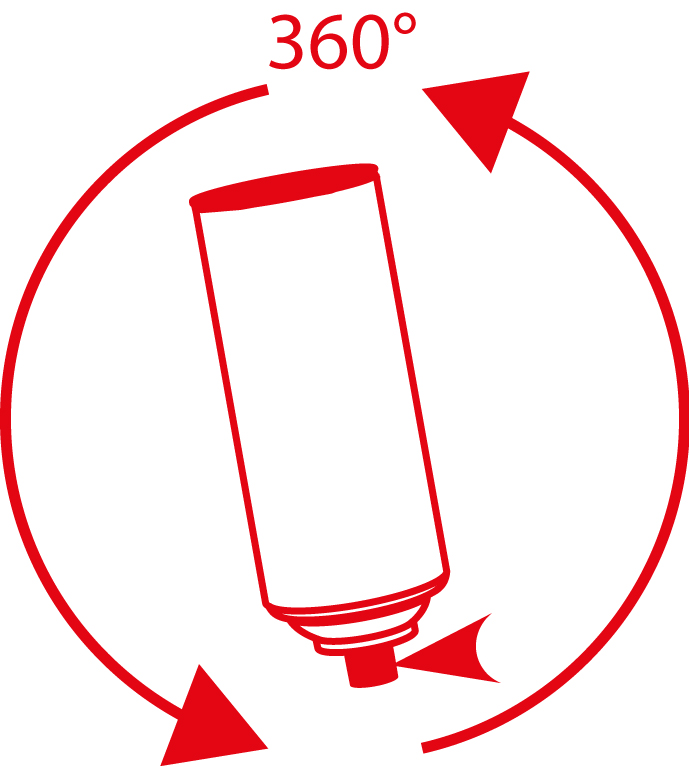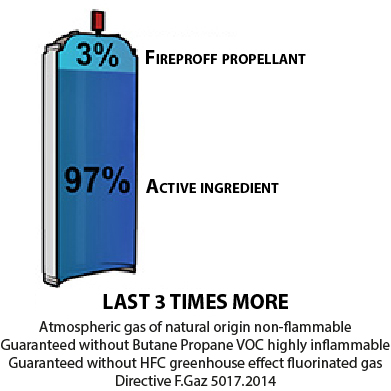Detect GEF 2000
Description
Simulates smoke equivalent to that recognised at the start of a fire. Ensures a guarantee of permanent efficiency of the detectors, for the sake of optimal security.
- Large capacity aerosol for professionals Net volume 250 ml Number of 5’’ tests: 100
- Can be used manually or with a pole
- Non-inflammable, not an atmospheric pollutant
- Non-pollutant with the detectors, optimal sensitivity.
- Test gas for autonomous smoke detectors and central related detectors, SSI approved (CE, EN 14 604, NF)
- Old ionic installations or new optical or photoelectric devices
- Smoke simulator for functional or operational tests.
- Response time: 3 to 4 sec.
- Non-flammable gas, non-greasy, non-polluting
- Guarantee of absence of butane and propane (extremely flammable and explosive)
- Guarantee of absence of fluorinated greenhouse gas HFC 134 Directive F Gas 517.2014
Applications
Non-inflammable, no PRP properties, no ODP properties, can be used with all types of detectors.
2 nozzles are always supplied with each aerosol:
- one for use with pole and bowl,
- one for manual use,
A very large number of test gas aerosols are filled with a butane-propane propellant gas, the danger factor of which is well-known. Avoid extremely flammable and explosive gasses.
On industrial installations, butane / propane features the same dangers – with deliberate emissions. Furthermore, butane-propane is a propellant gas which is an organo-volatile compound. VOCs whose emissions are regulated in industrial settings for environmental reasons, would also pose pathological risks on a toxicological level; should they penetrate the organism, it would be likely to result in the production of various toxic metabolites which would spread across the organs (as a result of reaction with proteins or nucleic acids).
With this, on the basis of the existing evidence, fire protection professionals have started to use test gas aerosols which contain a non-inflammable propellent: HFC 134 a.
HFC 134 a has a global warming potential of 1300 – it is almost ten times greater than the maximum limit (150) authorised by the Directive F.GAZ 517/2014; a directive which, come 1st January 2018, will prohibit the production of this gas and its marketing, and mandate that all packages that contain it be withdrawn from the market and destroyed.


Packaging




